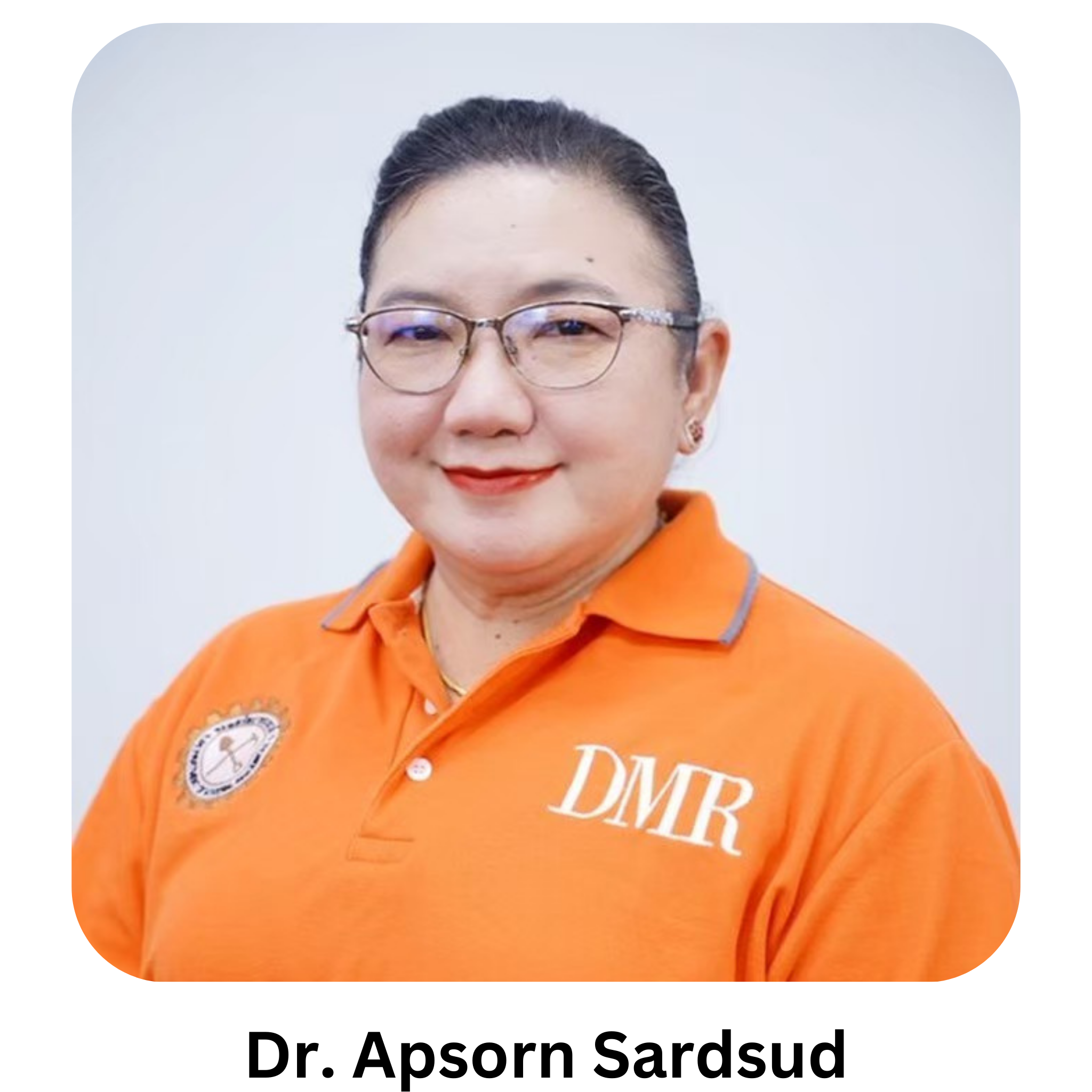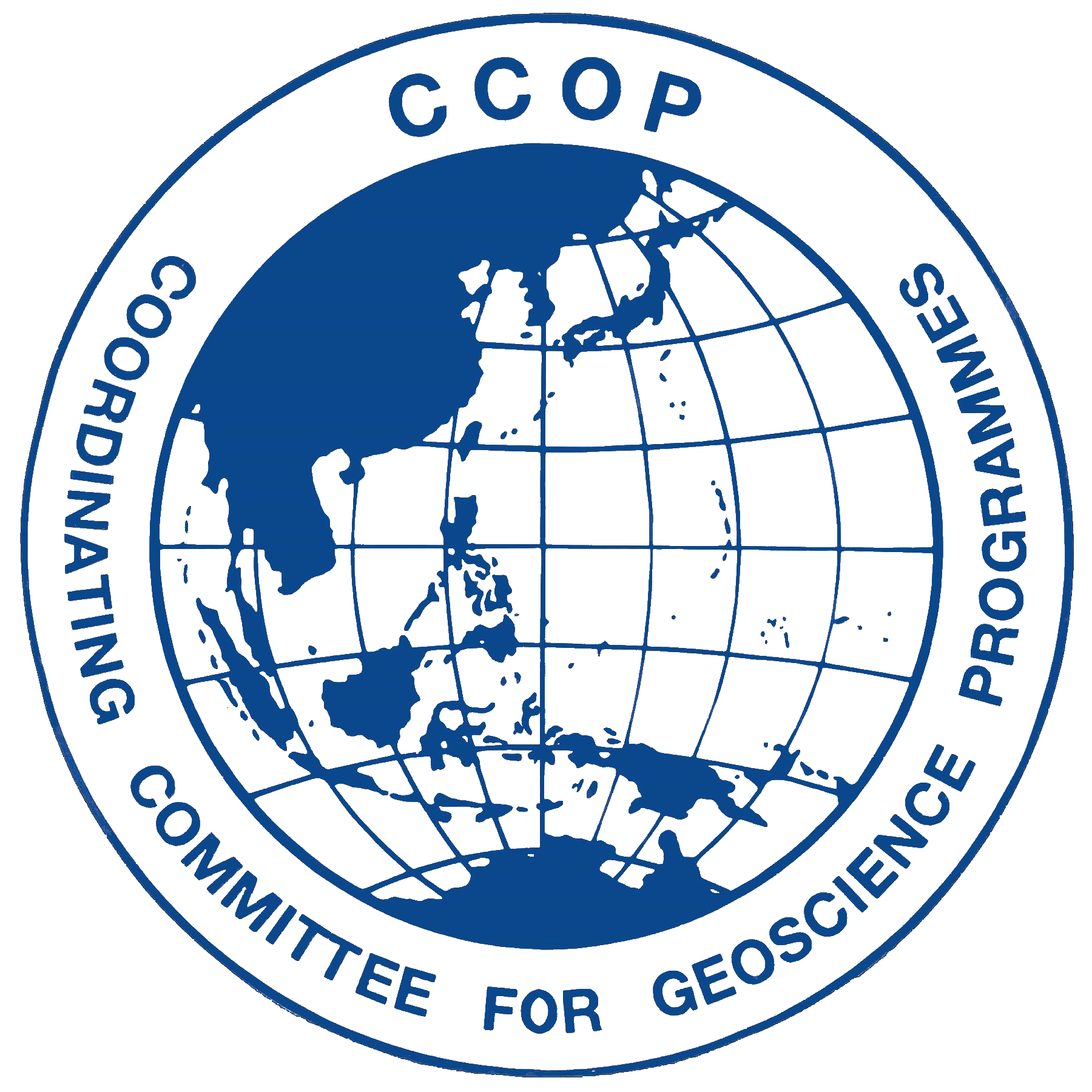A remarkable end-Permian boulder bed of conglomeratic limestone at Nam Nao in NE Thailand: its biostratigraphical and environmental significance
Keywords:
boulder bed of limestone, foraminifer species, Indochina Block, sea level drop, Upper PermianAbstract
Litho- and bio-stratigraphic analyses on the Lower Permian Khao Pa Khi and Middle-Upper Permian Khao Tham Yai limestones, and the siliciclastic Hua Na Kham Formation on clastic-dominant continental shelves in the western margin of the Indochina Block record important aspects of the extinction-related Guadalupian-Lopingian (G-LB) interval, and a large-scale sea-level drop of a global environmental change in the low-latitudes of the East Paleo-Tethys. Fusulinid and foraminifer species within the Khao Tham Yai Limestone record the abrupt disappearance of large-tested fusulines. The Khao Tham Yai Limestone above the G-LB is characterized by the sudden flourishing of a diverse range of smaller fusulinid and foraminifer species, together with the occurrence of a large number of broken fragments of diverse large-tested fusulinids. The second disappearance of smaller foraminifers occurred during the Wuchiapingian in the upper part of the Khao Tham Yai Limestone. These two phases of disappearance of fusulinid and foraminifer species on the continental margin of the Indochina Block likely appeared a little late compared to similar phases in the paleo-atolls of the mid-Panthalassa. The Wuchiapingian Hua Na Kham Formation unconformably onlaps the Khao Tham Yai Limestone replacing previous carbonate formation. These carbonate and siliciclastic formations are largely heteropic facies and possibly interfinger with each other. A remarkable boulder bed of fusulinids and conglomeratic limestones occurs on the top of the Hua Na Kham Formation. Fusulinid and foraminifer species in boulders indicate that they were eroded off the Khao Tham Yai barrier reef and transported by submarine debris flows that brought them to sites on the continental shelf where the Hua Na Kham Formation deposited. Such catastrophic events may have been caused by large-scale eustatic sea-level drop. The effects of this global environmental change on the continental margin of the Indochina Block may have occurred a little later in the Wuchiapingian compared with subaerial exposure and erosion reported from the G-LB interval in mid-oceanic seamounts that occur in mid-Panthalassa.
References
Bunopas, S. (1981). Paleogeographic history of western Thailand and adjacent parts of Southeast Asia A plate tectonic interpretation (Ph. D. Thesis). Victoria University of Wellington. New Zealand.
Charusiri, P., Daorerk, V., Archibald, D., Hisada, K., & Ampaiwan, T. (2002). Geotectonic evolution of Thailand: New synthesis. Journal of the Geological Society of Thailand, 1, 1-20.
Chonglakmani, C., & Sattayarak, N. (Cartographer). (1984). Geological Map of Changwat Phetchabun (Sheet NE 47-16,) [map]. 1:250,000. Bangkok: Survey Division, Department of Mineral Resources.
Chutakositkanon, V., Hisada, K., Charusiri, P., & Arai, S. (1999). Detrital chromian spinels from the Nam Duk Formation: a key to elucidate the tectonic evolution of central mainland Southeast Asia and the Loei Suture Zone in Thailand. In: Rathanasthien, B. and Rieb, S.L. (Eds.) Proceedings of International Symposium on Shallow Tethys (ST9 5) (pp. 450-456). Chiang Mai.
Domeier, M., & Torsvik, T.H. (2014). Plate tectonics in the late Paleozoic. Geoscience Frontiers, 5, 303-350.
Fontaine, H., & Salyapongse, S. (2001). A Murgabian to Lower Triassic sequence exposed from Khao Tham Yai to Khao Pa Khi, Northeast Thailand: A preliminary report. Journal of the Geological Society of Thailand, 1, 43-47.
Fontaine, H., Salyapongse, S., Nguyen Duc Tien, & Vachard, D. (2002). The Permian of Khao Tham Yai area in Northeast Thailand. The Symposium on Geology of Thailand, Bangkok, Thailand (pp. 26-31).
George, A.D., Playford, P.E., & Powell, M. C. (1997). Lithofacies and sequence development on an Upper Devonian mixed carbonate-siliciclastic fore-reef slope, Canning Basin, Western Australia. Sedimentology, 44, 843-867.
Goto, H., Maruoka, K., & Ishii, K. (1986). Lepidolina columbiana (Permian Fusulinid) from British Columbia, Canada. Tran-saction Proceedings of the Palaeontological Society of Japan (pp. 422-434).
Hada, S., Bunopas, S., Ishii, K., & Yoshikura, S. (1999). Rift-drift history and the amalgamation of Shan-Thai and Indochina/East Malaya Blocks. In: Metcalfe, I., Ren Jishun, Charvet, J., & Hada, S. (Eds.), Gondwana Dispersion and Asian Accretion, Final Results Volume for IGCP Project 321 (pp. 67-87). Rotterdam: A.A. Balkema Publishers.
Hada, S., Ishii, K., Landis, C.A., & Aitchison, J. (1996). Mid Permian Fusulinacean territories and identity of the Kurosegawa Terrane in Southwest Japan (Geologic Development of the Asian-Pacific Region, with implication in evolution of Gondwanaland). Japan Contribution to the IGCP, 1996 (IGCP National Committee of Japan) (pp. 27-34).
Hada, S., Khosithanont, S., Goto, H., Fontaine, & H., Salyapongsa, S. (2015). Evolution and Extinction of Permian fusulinid fauna in the Khao Tham Yai Limestone in NE Thailand. Journal of Asian Earth Sciences, 104, 175-184.
Haq, B.U., & Schutter, S.R., (2008). A chlonology of Paleozoic sea-level changes. Science, 322, 64-68.
Helmcke, D. (1994). Distribution of Permian and Triassic syn-orogenic sediments in central mainland SE-Asia. In: Wongwanich, T., Tansathien, W., & Tulyatid, J. (Eds.), Proceedings of the International Symposium on Stratigraphic Correlation of Southeast Asia (IGCP 306) (pp.123-128). Bangkok.
Helmcke, D., & Lindenberg, H.G. (1983). New data on the Indochinan Orogeny from Central Thailand. Geologishe Rundschau, 72, 317-328.
Ingavat, R., Toriyama, R., & Pitakpaivan, K. (1980). Fusuline Zonation and Faunal characteristics of the Ratburi Limestone in Thailand and its Equivalents in Malaysia. Geology and Palaeontology of Southeast Asia, (21), 43-56.
Ishii, K. (1966). On some Fusulinids and other foraminifera from the Permian of Pahang, Malaya. Journal of Geosciences, Osaka City University, 9, Art 4-V, 131-136, pls. 5-6.
Ishii, K., Okimura, Y., & Ichikawa, K. (1985). Notes on Tethys biostratigraphy with reference to Middle Permian Fusulinaceans. In: Nakazawa, K., Dickins, J.M. (Eds.), The Tethys, Her Paleogeography and Paleobiogeography from Paleozoic to Mesozoic, Tokai University Press, Tokyo (pp. 677-692).
Isozaki, Y. (2007). Guadalupian-Lopingian boundary event in mid-Panthalassa: correlation of accreted deep-sea chert and mid-oceanic atoll carbonates. In: Wong, T. (Ed.), Proceedings of the XVth International Congress of Carboniferous and Permian Stratigraphy (pp. 111-124). Amsterdam: Royal Netherlands Academy of Arts and Science.
Isozaki, Y. (2009). Illawarra Reversal: The fingerprint of a superplume that triggered Pangean breakup and the end-Guadalupian (Permian) mass extinction. Gondwana Research, 15, 421-432.
Isozaki, Y., & Aljinovic, D. (2009). End-Guadalupian extinction of the Permian gigantic bivalve Alatconchidae: End of gigantism in tropical seas by cooling. Palaeogeography, Palaeoclimatology, palaeoecology, 284, 11-21.
Isozaki, Y., & Ota, A. (2001). Middle/Upper Permian (Maokouan/Wuchapingian) boundary in mid-oceanic atoll limestone in Kamura and Akasaka, Japan. Proceedings of Japan Academy, 77B, 104-109.
James, N. & Stevens, R.K. (1986). Stratigraphy and correlation of the Cow Head Group, western Newfoundland. Bulletin of the Geological Survey of Canada., 336 (pp. 143).
Jin, Y., Zhang, J., & Shang, Q.H. (1994). Two phases of the end-Permian mass extinction. In: Embry, A.F., Beauchamp, B., & Glass, D.J. (Eds.), Pangea: Global Environments and Resources. Canadian Society of Petroleum Geologists, Memoir, 17, 813-822.
Kanmera, K., Ishii, K., & Toriyama, R. (1976). The evolution and extinction patterns of Permian Fusulinaceans. Geology and Palaeontology of Southeast Asia, (17), 129-154.
Kano, A. (1988). Facies and depositional conditions of a carbonate mound (Thithonian-Berriasian, SW-Japan). Facies, 18, 27-47.
Kasuya, A., Isozaki, I., & Igo, H. (2012). Constraining paleo-latitude of a biogeographic boundary in mid-Panthalassa: Fusuline province shift on the Late Guadalupian (Permian) migrating seamount. Gondwana Research, 21, 611-623.
Kofukuda, D., Isozaki, Y., & Igo, H. (2014). A remarkable sea-level drop and relevant biotic responses across the Guadalupian-Lopingian (Permian) boundary in low-latitude midPanthalassa: Irreversible changes recorded in accreted paleo-atoll limestones in Akasaka and Ishiyama, Japan. Journal of Asian Earth Sciences, 82, 47-65. Ota, A., & Isozaki, Y. (2006).
Fusuline biotic turnover across the Guadalupian-Lopingian (Middle-Upper Permian) boundary in mid-oceanic carbonate buildups: biostratigraphy of accreted limestone in Japan. Journal of Asian Earth Sciences, 26, 353-368.
Ota, M. (1977). Geological studies of Akiyoshi: A geosynclinals reef complex. Bulletin of the Akiyoshidai Science Museum, (5), 1-44, pls. 1-31.
Ozawa, T. (1970). Notes on the phylogeny and classification of the Superfamily Verbeekinoidea. Memoir of the Faculty of Science Kyushu University, Series D, Geol., 20, 17-58.
Ozawa, T. (1975). Evolution of Lepidolina multiseptata (Permian Foraminifer) in East Asia. Memoirs of the Faculty of Science Kyushu University, Series D, Geol., 23 (2), 117-164, plates 22-26.
Ridd, M. F., Barber, A. J., & Crow, M. J. (Eds.), (2011). The Geology of Thailand. Geological Society, London (pp. 626).
Ross, C.A. (1995). Permian fusulinaceans. In: Scholle, P.A., Peryt, T.M., Ulmer-Scholle, D.S. (Eds.), The Permian of northern Pangea. 1, SpringerVerlag, Berlin (pp. 167-185).
Sano, H., & Kanmera, K. (1991). Collapse of ancient oceanic reef complex-What happened during collision of Akiyoshi reef complex? - Sequence of collisional collapse and generation of collapse products. Journal of the Geological Society of Japan, 97, (8), 631-644.
Sheng, J.Z. (1963). Permian fusulinids of Kwangsi, Kueichow and Szechuan. Palaeontological Sinica, N.S.B., (10), 1-247, plates 1-36.
Ueno, K., & Charoentitirat, T. (2011). Carboniferous and Permian. In: Ridd, M. F., Barber, A. J., Crow, M. J. (Eds.). The Geology of Thailand. Geological Society (pp. 71-136). London.Ueno, K., & Hiasada, K. (2001). The Nan-Uttaradit-Sa Kaeo Suture as a Main Paleo-Tethyan Suture in Thailand: Is it real? Gondwana Research,4, 804-806.
Wielchowsky, C.C., & Young, J.D. (1985). Regional facies variations in Permian rocks of the Phetchabun fold and thrust belt, Thailand. In: Thanavarachorn, P., Hokjaroen, S., Youngme, W. (Eds.) Conference on Geology and Mineral Resources Development of the Northeast Thailand 1985 (pp. 41-55). Khon Kaen.
Downloads
Published
How to Cite
License
Copyright (c) 2020 Department of Mineral Resources, Thailand.

This work is licensed under a Creative Commons Attribution-NonCommercial-NoDerivatives 4.0 International License.








